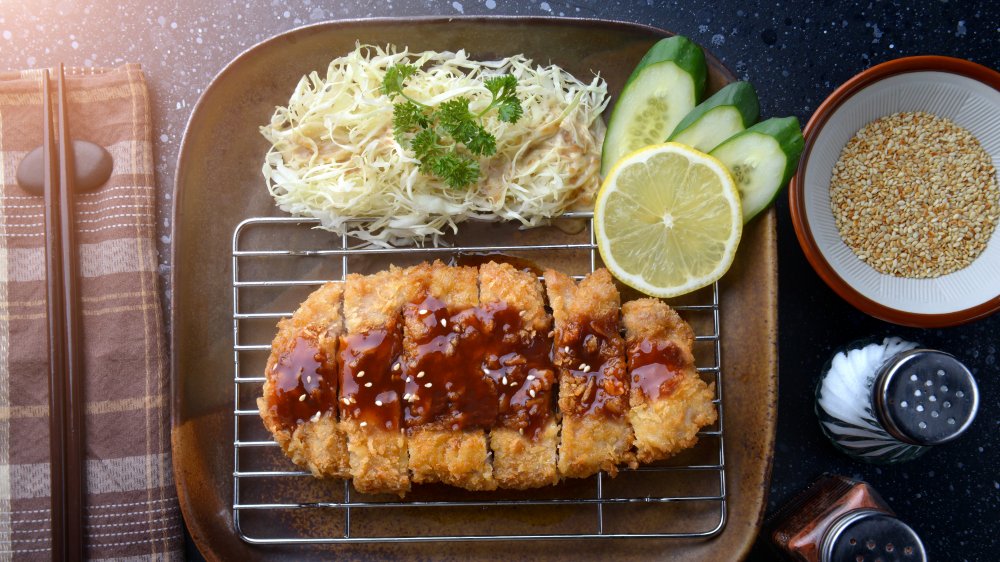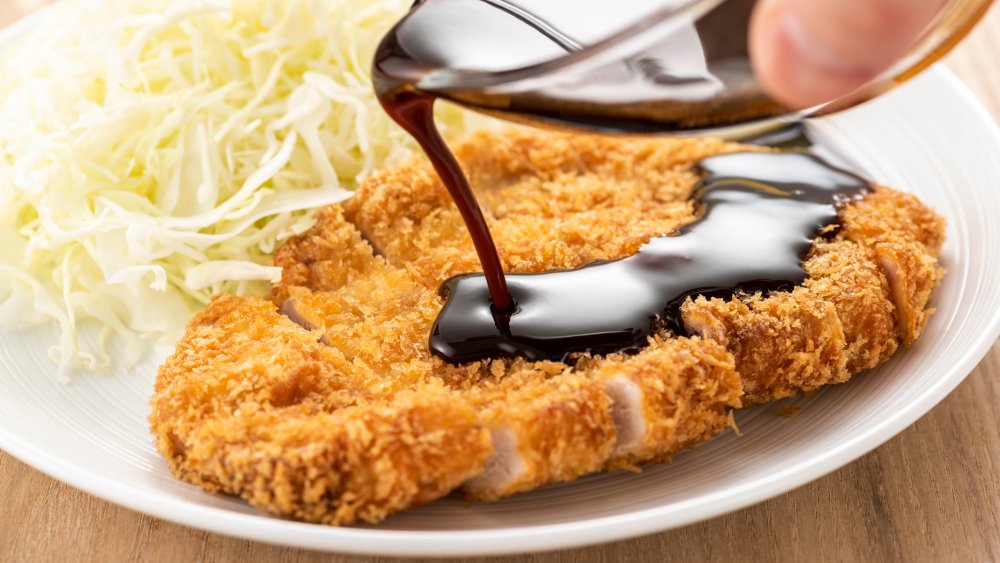This Is How You Make Japanese Katsu At Home
Katsu, or tonkatsu, is a way of life, and don't anyone tell you that it's just a Japanese chicken cutlet. (A) It's usually made with pork and (B), it's so much more than that. But good news: you can recreate this extra-crispy, juicy staple of Japanese (and increasingly, American) fast-food all on your own at home. Serious Eats has the deets.
The key to tonkatsu is starting with a good cut of meat and tenderizing it. If you opt for pork, choose a pork sirloin or pork loin cut. If chicken, a breast halved into cutlets will do, but to prevent dryness, you can also use boneless, skinless thighs. Next, pound them to about a quarter-inch thick, which tenderizes the meat and also helps with even cooking. You can achieve this with a ziplock bag, a meat mallet, or the bottom of a heavy pan.
Next, it's important to season or brine the meat for a few hours, especially if you're using chicken. This step helps it lock in more moisture, which makes for a plumper, more juicy katsu. You can either sprinkle salt on and let it sit (dry brine), or soak it in salty water (wet brine). You won't be disappointed with the results – moist, flavorful meat.
Breading and frying your Japanese katsu
For frying, use about a third of an inch of a neutral-flavored oil (canola, vegetable, peanut) and heat to about 350 degrees F. For breading, use flour, egg, then panko breadcrumbs, which you can set up while the oil heats. Panko crumbs are light and flaky, and absolutely non-negotiable for tonkatsu (unless you made your own Japanese milk bread – impressive).
You'll need three shallow dishes: first flour, then egg, and make sure to press on as thick a layer of panko as the cutlet will permit. The key to frying is to keep the oil temperature at a constant 300-325 degrees F once the meat is in, adjusting as you go. Too hot, and the crumbs will burn before the meat is cooked – too cold, and the meat could overcook by the time the crumbs are golden.
Once the internal temp reaches about 140 degrees F, your katsu is ready, and then all that's left is a generous drizzle of katsu sauce. You can buy or mix this dark, BBQ-adjacent sauce yourself, but it's what really makes the dish. And don't forget to cut it up into bite-sized strips – voila! Katsu!

